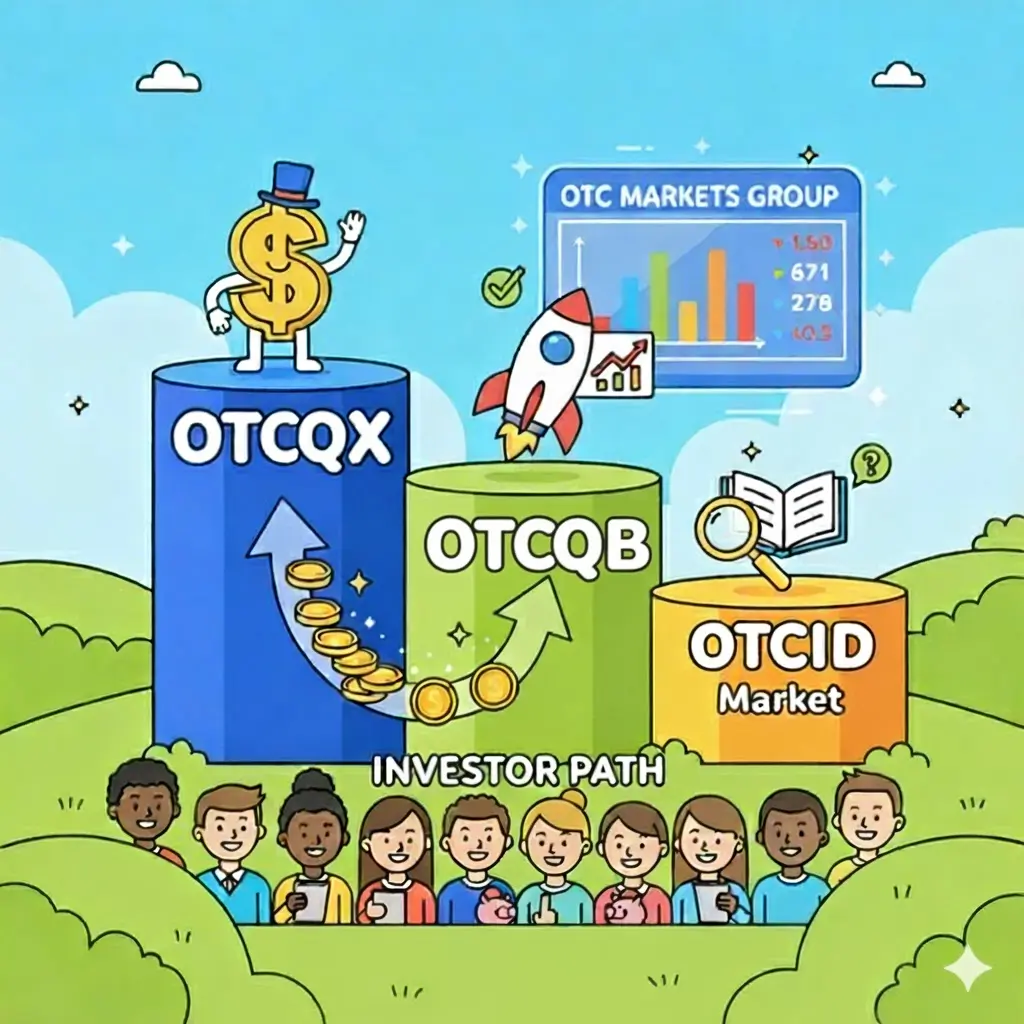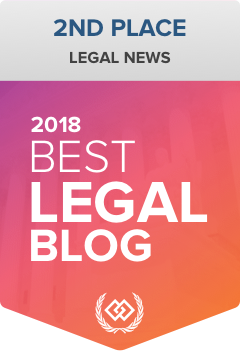Tiers and Transparency: Understanding the Differences Among OTCQX, OTCQB, and OTCID Markets
The OTC Markets Group operates a multi-tiered disclosure framework designed to categorize companies based on transparency, regulatory compliance, and investor protection. These tiers — OTCQX, OTCQB, and the newly structured OTCID Market — collectively form the modern over-the-counter (OTC) ecosystem.
The former Pink Market, long criticized for its lack of consistent disclosure, has been replaced by the OTCID (OTC Information Designation) market — a system designed to increase accountability and signal to investors the reliability of each issuer’s information.
Understanding the differences among these tiers is essential for investors, advisors, and issuers in determining where a company stands within the public markets and what its disclosure practices indicate about financial and operational health.
Overview of the Modern OTC Markets Structure
The OTC Markets Group functions as an electronic quotation system rather than a traditional exchange. It facilitates trading in securities of companies that do not meet — or have chosen not to pursue — the listing requirements of Nasdaq or the New York Stock Exchange (NYSE).
As of 2025, the three primary tiers are:
- OTCQX — The Premier Market for established, transparent issuers;
- OTCQB — The Venture Market for developing growth companies; and
- OTCID — The OTC Information Designation Market, which replaced the former Pink Market.
These categories reflect varying levels of disclosure, financial qualification, and investor risk.
OTCQX: The Premier Market
The OTCQX Market remains the highest-quality tier for OTC-traded companies. Issuers on OTCQX must:
- Meet rigorous financial reporting and governance standards;
- Be current in SEC, bank, or international disclosures;
- Employ a Designated Advisor for Disclosure (DAD) or Principal American Liaison (PAL); and
- Not be a penny stock, shell company, or entity in bankruptcy.
Companies listed on OTCQX are typically seasoned international issuers or U.S. public companies seeking to maintain a U.S. trading presence without incurring the regulatory costs of a national exchange.
Examples include Heineken N.V. (HEINY) and Roche Holding AG (RHHBY), both of which trade on OTCQX to provide liquidity for U.S. investors while retaining their primary foreign listings.
OTCQB: The Venture Market
The OTCQB Market serves as a gateway for smaller or early-stage companies committed to transparent reporting but not yet ready for OTCQX or national exchange listing.
Issuers must:
- Be current in SEC or alternative reporting obligations;
- Maintain a minimum bid price of $0.01;
- Undergo annual management certification;
- Pass a background check for officers, directors, and control persons; and
- Pay annual listing and verification fees.
OTCQB is often seen as a proving ground for emerging companies — a place to establish a disclosure record, attract investors, and demonstrate regulatory discipline before an eventual uplist.
OTCID: The OTC Information Designation Market
The OTCID Market replaced the former Pink Open Market structure in 2024. It is designed to increase transparency by explicitly signaling an issuer’s information status and disclosure reliability.
Under the new framework, companies are designated as one of the following within OTCID:
- OTCID – Current: Issuers providing up-to-date financials and company disclosure through OTC Markets’ system.
- OTCID – Limited: Issuers providing partial or outdated disclosure.
- OTCID – Unverified: Issuers providing little or no information, often subject to Caveat Emptor flags for investor caution.
This new naming convention replaces the old “Pink Current,” “Pink Limited,” and “Pink No Information” categories, thereby enhancing investor clarity.
The Caveat Emptor symbol remains in use as a regulatory warning for companies suspected of misleading promotion, fraud, or delinquent disclosure.
Transparency and Investor Use of the Tier System
The OTC tier system — OTCQX, OTCQB, and OTCID — serves as a disclosure spectrum for investors:
- OTCQX companies typically exhibit high transparency, audited financials, and strong investor communication.
- OTCQB companies demonstrate a commitment to disclosure, although they may have limited operating histories or smaller capitalization.
- OTCID issuers vary widely; investors must perform significant due diligence before trading.
Investors can use OTC Markets’ website to view:
- Information symbols indicating disclosure level;
- Caveat Emptor warnings; and
- Issuer profile badges identifying reporting status and auditor qualifications.
Transition Between Tiers
Companies can move between OTCQX, OTCQB, and OTCID depending on their compliance posture and disclosure timeliness.
- Upgrading from OTCQB to OTCQX requires audited financials, a DAD/PAL sponsor, and strict corporate governance compliance.
- Downgrading to OTCID occurs when a company fails to maintain current disclosure, experiences trading suspensions, or is subject to enforcement actions.
The flexibility of the tier system encourages issuers to remain transparent while giving investors visibility into compliance trends.
Conclusion
The 2025 OTC Markets structure marks a turning point in market transparency. By replacing the opaque Pink Market with the OTCID system, OTC Markets Group has aligned its framework with modern regulatory expectations and investor protection priorities.
For legitimate companies, OTCQX and OTCQB continue to provide effective gateways to the public markets. For others, the OTCID market offers access but also accountability — signaling to investors the true level of transparency an issuer maintains.
Ultimately, the modern OTC ecosystem functions as a real-time disclosure barometer. Whether it serves as a gateway to growth or a warning beacon for risk depends on how issuers manage governance, disclosure, and investor trust.
Additional OTC Markets Resources on Securitieslawyer101.com
- Reverse Mergers and OTC Markets: Compliance After the Transaction
- Why So Few Brokerage Firms Accept OTC Markets Shares — And What It Means for Investors
- How Foreign Issuers Use Rule 12g3-2(b) for OTC Quotation
- High Risk or Hidden Opportunity? Due Diligence When Investing in OTC IPOs and Pre-IPO Shares
- What Is a Direct Public Offering (DPO) on the OTC Markets?
- Corporate Actions and Symbol Changes on OTC Markets
- The Penny Stock Graveyard – The OTC Markets Expert Market Explained: What Happens When Issuers Lose Quotation Eligibility
- OTC Markets Liquidity and Price Discovery
- Material Event Reporting on the OTCID Market for Non-SEC Reporting Issuers
- OTC Markets Issuers and SEC Reporting: Website Requirements and Best Practices (2025 Guide)
- OTC Markets Listing for Canadian Issuers
- Compliance for Cryptocurrency and Digital-Asset Issuers on OTC Markets
- Toxic Convertible Financing and OTC Markets Issuers
- Comparing OTCQX, OTCQB, and OTCID: Which Tier Is Right for Your Company?
- Uplisting from OTC Markets to Nasdaq or NYSE: The Uplisting Path and Compliance Milestones
- Depositing OTC Markets Shares — And What It Means for Investors
- Cautionary Tales from the OTC Markets
- Common Disclosure Deficiencies Leading to OTC Markets Suspension
- Annual and Quarterly Reporting Under the OTC Markets Alternative Reporting Standard
- SEC and FINRA Enforcement Trends in the OTC Market
- Promotional Activity & Investor Relations Rules on OTC Markets
- Annual and Quarterly Reporting Under the OTC Markets Alternative Reporting Standard
- OTC Markets Direct: Sponsoring Market Makers Bypassed Under Rule 15c2-11
- When Short Sellers Hit OTC Markets Stocks – Securities Lawyer 101
- The Role of Transfer Agents in OTC Markets Compliance
- How the OTC Markets Expert Market Works – Securities Lawyer 101
If you have any questions about this article or would like to speak to a Securities Attorney, Hamilton & Associates Law Group, P.A. is ready to help. Our Founder, Brenda Hamilton, is a nationally known and recognized securities attorney with over two decades of experience assisting issuers worldwide with going public on the Nasdaq, NYSE, and OTC Markets. Since 1998, Ms. Hamilton has been a leading voice in corporate and securities law, representing both domestic and international clients across diverse industries and jurisdictions. Whether you are taking your company public, raising capital, navigating regulatory challenges, or entering new markets, Brenda Hamilton and her team deliver the experience, strategic insight, and results-driven representation you need to succeed.
To speak with a Securities Attorney, please contact Brenda Hamilton at 200 E Palmetto Rd, Suite 103, Boca Raton, Florida, (561) 416-8956, or by email at [email protected].
Hamilton & Associates | Securities Attorneys
Brenda Hamilton, Securities Attorney
200 E Palmetto Rd, Suite 103
Boca Raton, Florida 33432
Telephone: (561) 416-8956
Facsimile: (561) 416-2855
www.SecuritiesLawyer101.com







